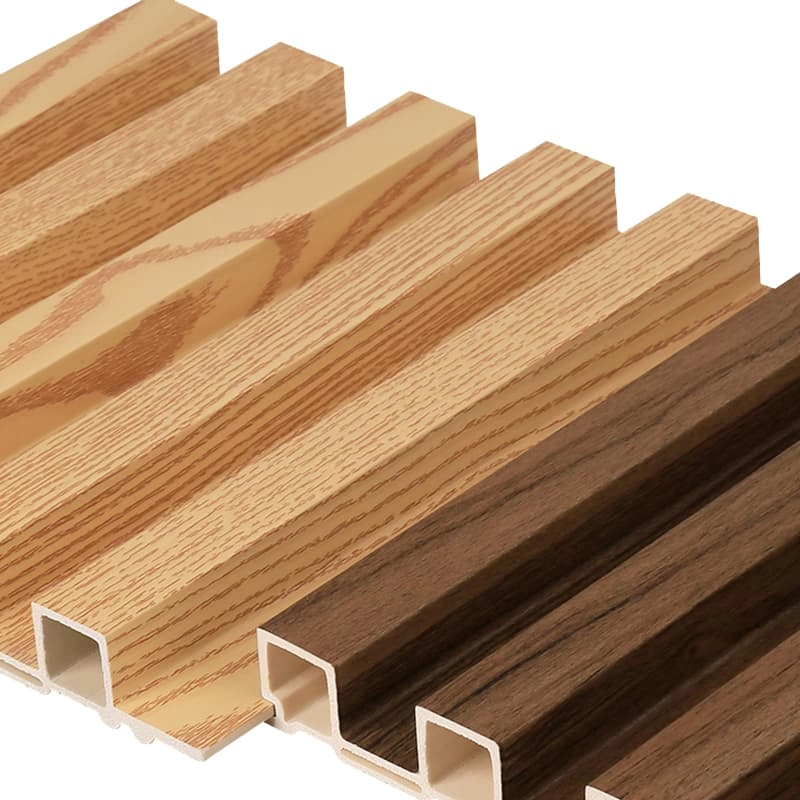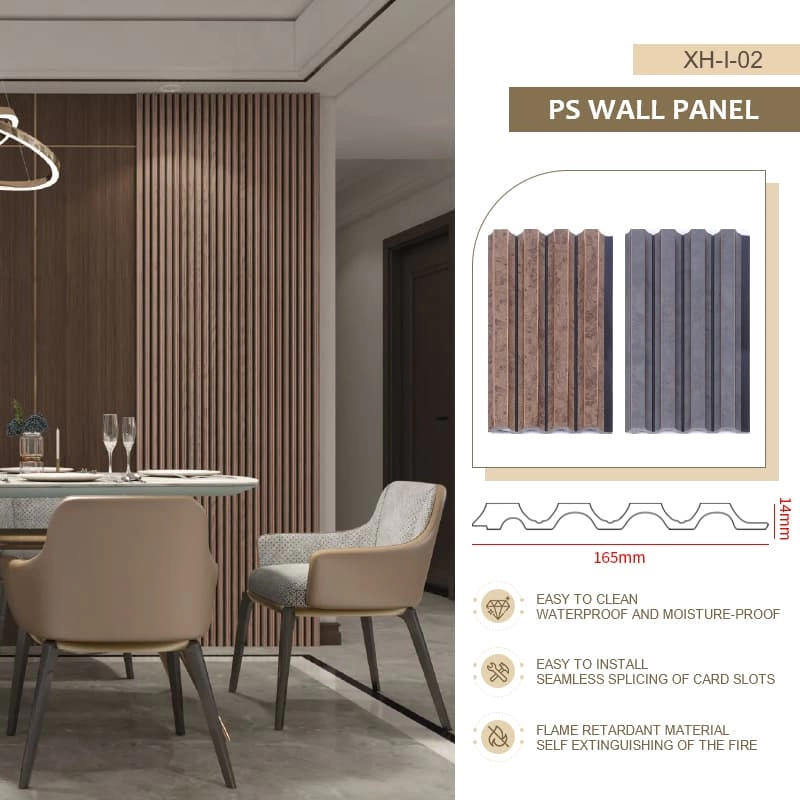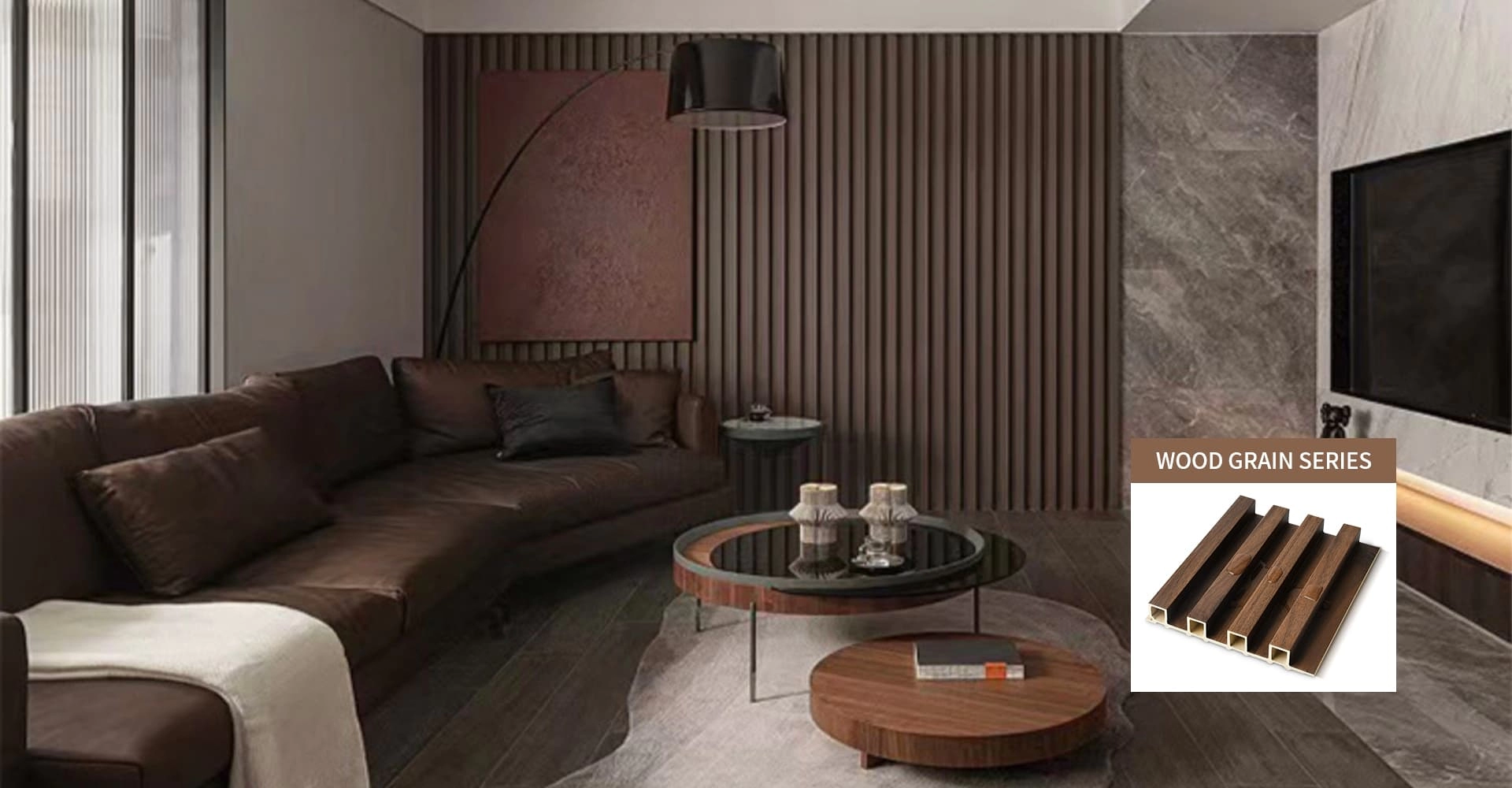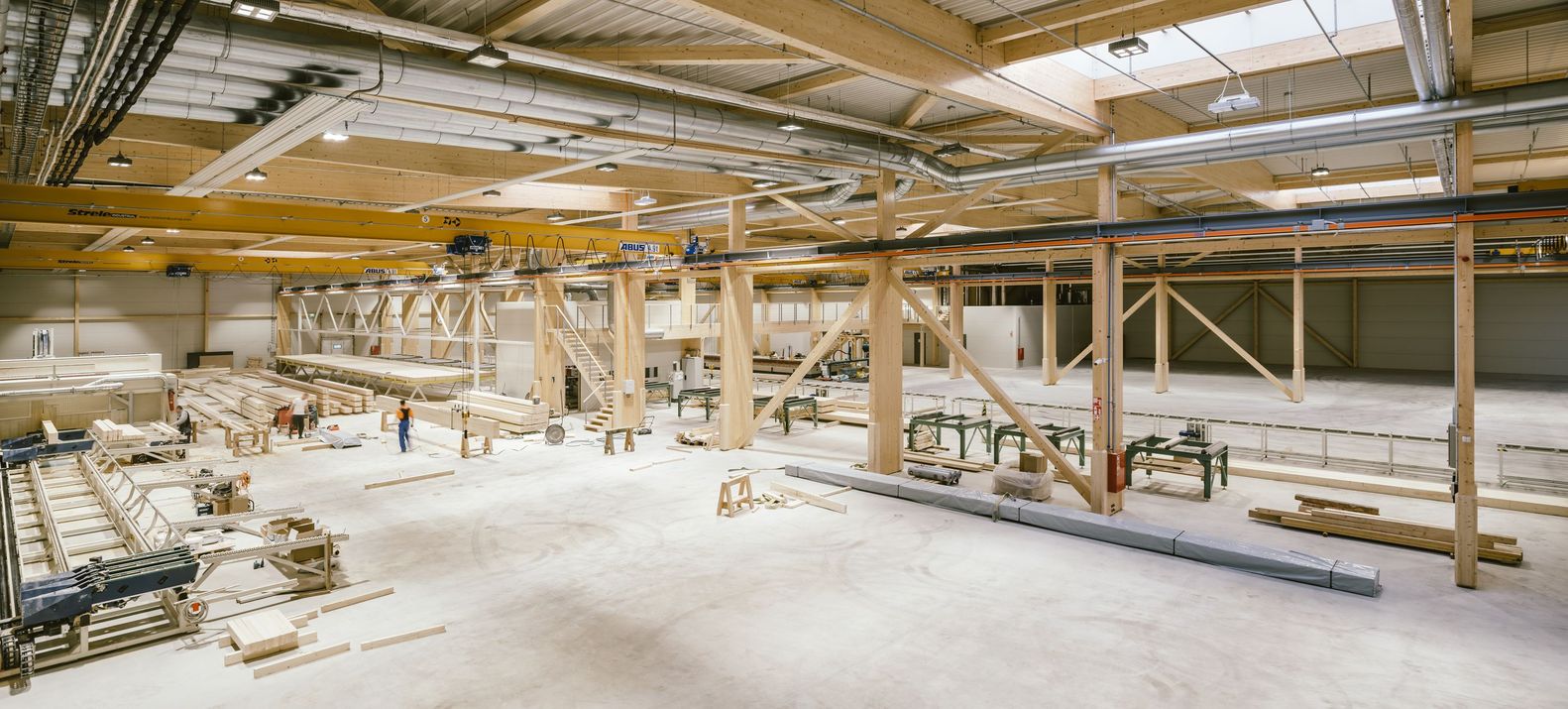CATEGORIES
Revolutionize Your Space: The Ultimate Guide to WPC Ceiling Panels
Wood Plastic Composite (WPC) ceiling panels are rapidly transforming interior design, offering a compelling blend of aesthetics, durability, and sustainability. If you're a construction professional, interior designer, architect, or retailer like Mark Wilson looking for innovative and reliable ceiling materials, this guide is for you. We'll delve deep into what WPC ceiling panels are, their significant advantages over traditional options, installation insights, and crucial factors to consider when sourcing them, particularly from manufacturers like us in China. Understanding WPC ceiling technology will empower you to make informed decisions, enhance your projects, and satisfy your clients' demands for modern, high-quality finishes.
What Exactly Are WPC Ceiling Panels Made Of?
WPC ceiling panels, a type of wood-plastic composite, represent a significant advancement in architectural decorating materials. At their core, they are a hybrid material expertly crafted from a precise blend of wood fibers and plastic. Typically, the wood fibers component comes from reclaimed sources like sawdust or wood chips (often recycled wood fibers), making WPC material an eco-friendly choice. The plastic component usually involves thermoplastics such as polyethylene (PE), polypropylene (PP), or PVC (polyvinyl chloride), often incorporating recyclable plastic as well.
This unique composite mixture is created through a process called extrusion. During extrusion, the wood fibers and plastic are thoroughly mixed under high temperature and pressure, then forced through a die shaped to create the specific profile of the ceiling panel. This process ensures a consistent, dense, and homogenous ceiling product that leverages the best qualities of both wood and plastic: the natural look and texture of wood combined with the durability and resistance of plastic materials. The result is a ceiling panel that is more stable and versatile than natural wood.
Understanding the composition is crucial. It explains why WPC ceiling panels offer superior performance in moisture resistance, termite resistance, and dimensional stability compared to traditional wood ceilings. The wood-plastic combination makes WPC a robust ceiling solution suitable for a wide range of interior design applications, moving beyond just composite decking into sophisticated indoor uses like false ceiling systems.

Why Should You Choose WPC Ceilings Over Traditional Ceiling Materials?
When considering ceiling options, professionals like Mark Wilson constantly weigh factors like cost, durability, aesthetics, and installation ease. WPC ceiling panels present compelling advantages of wpc ceiling systems compared to traditional materials such as gypsum boards, plaster of Paris (POP), solid wood, or even metal ceilings. While traditional options have their place, WPC ceilings address many of their inherent limitations.
Consider natural wood ceilings: they offer undeniable beauty but are susceptible to moisture damage, termites, warping, and require significant regular maintenance. Gypsum and POP ceilings, while common, can be brittle, prone to water stains, and installation can be messy. WPC ceiling panels, however, are engineered to overcome these issues. They provide the aesthetic warmth of wood grain textures but are inherently waterproof, termite-resistant, and dimensionally stable, making them ideal even for moisture-prone areas like bathrooms and kitchens.
Furthermore, the installation of WPC ceiling systems is often cleaner and faster compared to wet processes like plastering. The consistency of the composite material ensures uniformity across panels, simplifying the fitting process. From a long-term perspective, the low maintenance nature of WPC ceiling panels translates into cost savings and less hassle for the end-user, a significant selling point for construction firms and retailers. This makes the WPC ceiling a versatile and practical solution for both residential and commercial projects.
| Feature | WPC Ceiling Panels | Traditional Wood Ceiling | Gypsum Ceiling |
|---|---|---|---|
| Material | Wood Plastic Composite | Natural Wood | Gypsum Plasterboard |
| Moisture | High Resistance (Waterproof) | Low Resistance | Moderate Resistance |
| Durability | High (Resistant to rot, insects) | Moderate (Susceptible) | Moderate (Can crack) |
| Maintenance | Low Maintenance | High Maintenance | Moderate Maintenance |
| Installation | Relatively Easy to Install | Moderate/Difficult | Moderate (Messy) |
| Eco-Friendly | Often uses recyclable materials | Sustainable if sourced responsibly | Varies |
| Aesthetics | Wood-like appearance, versatile | Natural beauty | Smooth, paintable |
What Are the Standout Benefits of WPC Ceilings for Modern Interiors?
The popularity of WPC ceiling panels stems from a host of tangible benefits that appeal directly to the needs of modern construction and interior design. These benefits of wpc ceilings make them an attractive proposition for anyone looking to upgrade or install a new ceiling.
Key advantages include:
- Exceptional Durability: WPC ceiling panels are known for their durability. They resist scratches, impacts, termites, and decay far better than traditional wood. This longevity ensures the ceiling remains looking great for years with minimal maintenance.
- Superior Water Resistance: Unlike wood or gypsum, WPC material does not absorb water. This waterproof quality makes WPC ceilings an excellent choice for humid environments like bathrooms, kitchens, basements, and coastal properties. No more worries about swelling, warping, or mold growth on your ceiling panel.
- Aesthetic Versatility: WPC ceiling panels come in a wide range of colors, finishes, and textures, including realistic wood grain patterns. This allows designers and architects immense creative freedom to match any home decor style, from contemporary to classic. You can achieve the look of real wood without its drawbacks. Explore our bamboo and wood fiber wall panels for complementary designs.
- Low Maintenance: One of the most significant benefits of wpc ceilings is their ease of maintenance. They don't require painting, sealing, or staining like solid wood. Cleaning usually involves just a simple wipe-down with mild soapy water, saving time and effort over the ceiling's lifespan.
- Eco-Friendly Option: Many WPC ceiling panels utilize wood fibers and recyclable plastics, reducing reliance on virgin timber and diverting plastic waste from landfills. This makes them a more sustainable choice compared to some traditional materials.
- Improved Insulation & Acoustics: The composite structure of WPC ceiling panels can offer better thermal insulation compared to some thin ceiling materials, potentially contributing to reducing energy consumption. They also possess decent sound absorption properties, helping to create quieter and more comfortable indoor environments.
These combined benefits make WPC ceiling panels a smart investment, enhancing both the functional performance and the visual appeal of any interior space. They are a truly versatile and practical ceiling option.

How Waterproof and Durable Are WPC Ceiling Panels in Reality?
A primary concern for buyers like Mark Wilson is whether product claims match reality, especially regarding durability and water resistance. For WPC ceiling panels, the answer lies in their fundamental composition: the wood-plastic composite. The encapsulation of wood fibers within a plastic matrix significantly minimizes water absorption. Unlike natural wood, which readily absorbs moisture leading to swelling, rot, and fungal growth, WPC material is inherently resistant.
This waterproof characteristic is not just superficial; it's integral to the material. This makes WPC ceiling panels exceptionally suitable for areas exposed to high humidity or occasional splashes, such as bathrooms, kitchens, laundry rooms, and even covered outdoor patios. The plastic component forms a protective barrier, ensuring the structural integrity and appearance of the ceiling panel are maintained over time, even in challenging conditions. You won't see the water stains or sagging often associated with damp gypsum ceilings.
In terms of durability, the composite nature again plays a key role. WPC ceiling panels resist termites and other wood-boring insects that can plague traditional wood structures. They are also generally more resistant to scratches, dents, and impacts compared to softer woods or gypsum boards. This resilience translates to a longer lifespan for the ceiling, reducing the need for costly repairs or replacements. As a factory owner, I, Allen, can attest that our production processes focus on achieving the optimal density and composition to maximize these durability features in every ceiling panel and high-quality WPC wall panels we manufacture.
Are WPC Materials Genuinely Eco-Friendly? Exploring Sustainability.
Sustainability is no longer a niche concern; it's a critical factor in material selection for architects, designers, and developers worldwide. Mark Wilson's clients likely value eco-friendly options. So, how does WPC ceiling material stack up? Generally, WPC is considered a more sustainable option compared to using 100% virgin plastic or harvesting slow-growing hardwoods for solid wood ceilings.
The key environmental benefit lies in the composition: WPC typically utilizes recycled wood fibers (like sawdust from mills, a byproduct that might otherwise be waste) and recyclable plastics. By incorporating these recycled components, WPC ceiling panel production helps conserve natural resources, reduces deforestation pressure, and diverts waste from landfills. This "upcycling" process gives new life to materials, aligning with circular economy principles.
However, it's important to have a nuanced view. The manufacturing process itself, involving heat and extrusion, consumes energy. The plastic component, even if recyclable, is still derived from fossil fuels initially. Responsible manufacturers, like us at Xihongbm, strive to optimize energy efficiency in production and prioritize the use of recycled content. We also ensure our WPC ceiling products are durable and long-lasting, which reduces the frequency of replacement and associated environmental impact. When considering the full lifecycle – resource use, longevity, low maintenance, and potential for recycling at end-of-life (though WPC recycling infrastructure is still developing) – WPC ceiling panels present a favorable environmentally friendly profile compared to many conventional ceiling materials. Always look for suppliers transparent about their material sourcing and manufacturing practices.
What Design Possibilities Do WPC Ceiling Panels Offer?
Aesthetics are paramount in interior design, and WPC ceiling panels deliver remarkable versatility to meet diverse design preferences. Gone are the days when composite materials meant compromising on style. Modern WPC ceiling manufacturing allows for a vast array of looks, ensuring there's a ceiling design solution for virtually any project.
The primary aesthetic advantage is the ability to mimic natural wood convincingly. WPC ceiling panels are available in numerous wood grain patterns, textures, and colors, replicating everything from light oak and pine to rich walnut and teak. This allows designers to achieve the warmth and character of a wood ceiling without the associated maintenance and durability concerns. Beyond wood looks, WPC ceiling panels can also be produced in solid colors, metallic finishes, or even custom designs, offering endless creative possibilities for your ceiling.
The format of the ceiling panel itself also contributes to design flexibility. Panels come in various widths and lengths, often with interlocking tongue-and-groove systems for a seamless finish. They can be used to create different ceiling effects, such as:
- Flat, continuous ceilings: Providing a clean, modern look.
- Fluted or slatted ceilings: Adding texture and architectural interest.
- Coffered ceilings: Creating depth and a sense of luxury (using complementary WPC profiles).
- False ceiling applications: Concealing wiring, plumbing, or creating multi-level designs.
This adaptability in texture, color, and form makes WPC ceilings are a versatile choice suitable for residential living rooms, bedrooms, commercial offices, retail spaces, hotels, and more. They allow for sophisticated and customized ceiling design statements. Check out some application ideas featuring our PS Wall Panel designs which share similar design principles.

Is the Installation Process for WPC Ceilings User-Friendly?
For contractors and builders, installation efficiency directly impacts project timelines and costs. Mark Wilson, dealing with construction firms, knows the importance of materials that are easy to install. WPC ceiling panels generally score well in this regard, often simplifying the installation process compared to some traditional ceiling methods.
Most WPC ceiling panels feature a tongue-and-groove or similar interlocking mechanism. This allows panels to click together securely and creates a neat, often seamless, join. Panels are typically fixed to a supporting framework (battens made of wood, metal, or even WPC) using screws, clips, or staples, depending on the specific system. This framework is first installed onto the existing ceiling structure or joists. The lightweight nature of many WPC ceiling panels (compared to solid wood or thick plasterboard) makes handling and lifting easier for installers.
Key advantages of the WPC ceiling installation process:
- Dry Installation: No wet trades like plastering are needed, reducing mess and drying time.
- Speed: The interlocking system and straightforward fixing methods allow for quicker coverage of the ceiling surface.
- Manageability: Panels can usually be cut to size using standard woodworking tools.
- DIY Potential: For smaller projects or experienced DIYers, installing WPC ceiling panels can be achievable, although professional installation is recommended for best results, especially on larger or complex ceilings. Following the manufacturer's installation instructions is crucial.
While the basic installation process is relatively simple, proper planning is essential. This includes ensuring the sub-frame is level and securely fixed, planning the layout of the ceiling panels (especially if patterns are involved), and accounting for light fixtures or other penetrations in the ceiling. Overall, WPC ceiling panels offer a comparatively user-friendly installation experience, contributing to faster project completion.
How Much Maintenance Do WPC Ceiling Panels Typically Require?
One of the most compelling features of WPC ceiling panels is their incredibly low maintenance requirements. This is a major selling point compared to natural wood ceilings, which need periodic sealing, staining, or painting to protect them and maintain their appearance. For property owners and facility managers, minimal maintenance translates directly into long-term cost and time savings.
The inherent properties of the wood plastic composite make WPC ceilings resistant to many common issues. Because they are waterproof and don't support fungal growth, mold and mildew are rarely a problem. The durable surface resists staining and is generally easy to clean. For routine upkeep, dusting or wiping the ceiling panel surface with a damp cloth or a mild detergent solution (mild soapy water) is usually sufficient to keep the ceiling looking fresh.
Unlike wood, WPC ceiling panels won't warp, crack, or splinter due to changes in humidity or temperature. They retain their color well over time, especially formulations designed with UV inhibitors for areas receiving indirect sunlight. Essentially, once installed, a WPC ceiling requires very little maintenance beyond occasional cleaning. This "install and forget" quality is highly valued in both residential settings (like a busy living area) and commercial applications where maintenance disruptions need to be minimized. The ease of maintenance ensures the ceiling remains an attractive feature for years without demanding constant attention.
For B2B buyers like Mark Wilson sourcing products internationally, ensuring consistent quality and verifying certifications are critical steps, yet often pain points. Dealing directly with a reputable factory like Xihongbm can alleviate many of these concerns when purchasing WPC ceiling panels. Reliable manufacturers understand the importance of stringent quality control (QC) throughout the production process, from raw WPC material inspection to final ceiling panel finishing and packaging.
Key quality aspects to look for in WPC ceiling panels include:
- Consistent Density and Composition: Ensures uniform strength and performance across all panels.
- Dimensional Stability: Panels should meet precise size specifications with minimal warping.
- Color Consistency: Batch-to-batch color matching is vital for large projects.
- Surface Finish Quality: Free from defects, scratches, or inconsistencies in texture or pattern.
- Interlocking Mechanism Integrity: Ensuring panels fit together smoothly and securely.
Certifications provide objective proof of quality and safety compliance. Important certifications for WPC ceiling panels might include:
- Fire Safety Ratings: Crucial for building code compliance (e.g., ASTM E84 in the US, EN 13501-1 in Europe). Reputable suppliers will provide test reports.
- Environmental Certifications: Such as those verifying recycled content or low VOC emissions (Volatile Organic Compounds).
- ISO Certifications: (e.g., ISO 9001 for Quality Management) indicates the factory adheres to international standards in its operations.
Mark's pain points regarding communication delays and potential certificate fraud highlight the need for transparency and trust. As Allen, representing our factory, we prioritize clear communication, provide genuine test reports and certifications upon request, and welcome third-party inspections. We understand that robust QC and verifiable certifications are essential for building long-term B2B partnerships for WPC ceiling and wall panel supplies.
Why Partnering with a Direct WPC Ceiling Factory Matters.
Choosing the right supplier is as important as choosing the right ceiling material. For buyers like Mark Wilson, partnering directly with a WPC ceiling panel factory like Xihongbm, rather than going through multiple intermediaries, offers significant advantages, especially when sourcing from countries like China.
Direct partnership benefits:
- Competitive Pricing: Eliminating middlemen often leads to better pricing, crucial for Mark's profit model.
- Improved Communication: Direct lines of communication with factory sales and technical teams (like myself, Allen) can resolve issues faster and ensure requirements are clearly understood, addressing Mark's frustration with inefficient communication.
- Greater Customization Potential: Factories often have more flexibility to accommodate custom orders regarding dimensions, colors, or specific WPC material formulations for ceiling or wall panel projects.
- Quality Assurance Transparency: Easier access to information about QC processes, material sourcing, and certifications. Possibility of factory audits or arranging third-party inspections directly.
- Logistics Coordination: Factories experienced in export (like us, shipping to the USA, North America, Europe, Australia) often have established logistics partnerships, potentially streamlining the shipping process and providing more reliable delivery estimates, mitigating Mark's concern about shipment delays.
- Technical Expertise: Direct access to factory expertise regarding WPC ceiling panel properties, installation instructions, and troubleshooting.
While challenges like time differences or language barriers can exist, a professional factory dedicated to export will have systems and English-speaking staff to manage these effectively. Building a direct relationship fosters trust and collaboration, leading to smoother transactions and a more reliable supply chain for high-quality WPC ceiling and other decorative products like PVC marble sheets. It allows us to understand and better serve the specific needs of customers involved in construction, interior design, and retail across the globe.
Key Takeaways on WPC Ceiling Panels:
To summarize the essential points about WPC ceiling panels:
- Innovative Material: They are a wood-plastic composite, blending recycled wood fibers and plastics (PVC, PE, PP) via extrusion for optimal performance.
- Superior Durability: Highly resistant to moisture (waterproof), termites, rot, and impact, ensuring a long-lasting ceiling.
- Aesthetic Versatility: Available in a wide range of colors and textures, realistically mimicking natural wood and offering diverse design options for any ceiling.
- Low Maintenance: Require minimal maintenance – typically just occasional cleaning with mild soap and water. No need for painting or sealing.
- Eco-Friendly Choice: Often utilize recyclable materials, making them a more sustainable ceiling option than some traditional materials.
- Easy Installation: Generally feature user-friendly interlocking systems and dry installation methods, saving time on projects.
- Practical Applications: Ideal for various interior spaces, including high-humidity areas like kitchens and bathrooms, for both residential (home decor) and commercial (home and business) use.
- Supplier Importance: Partnering directly with a reputable factory ensures better pricing, communication, quality control transparency, and access to certifications for your WPC ceiling needs.
WPC ceiling panels represent a modern, intelligent solution for creating beautiful, durable, and sustainable ceilings. By understanding their properties and benefits, professionals can confidently incorporate them into their projects, delivering value and satisfaction to their clients.





